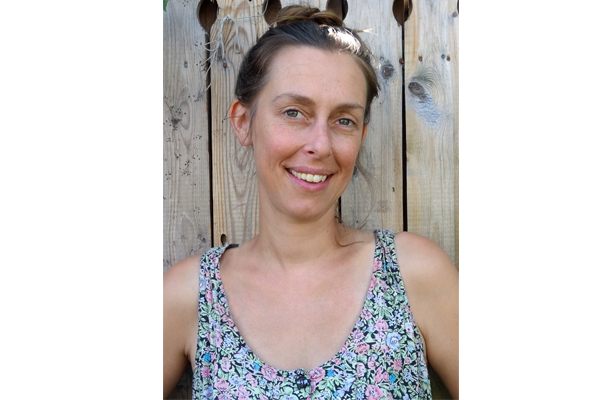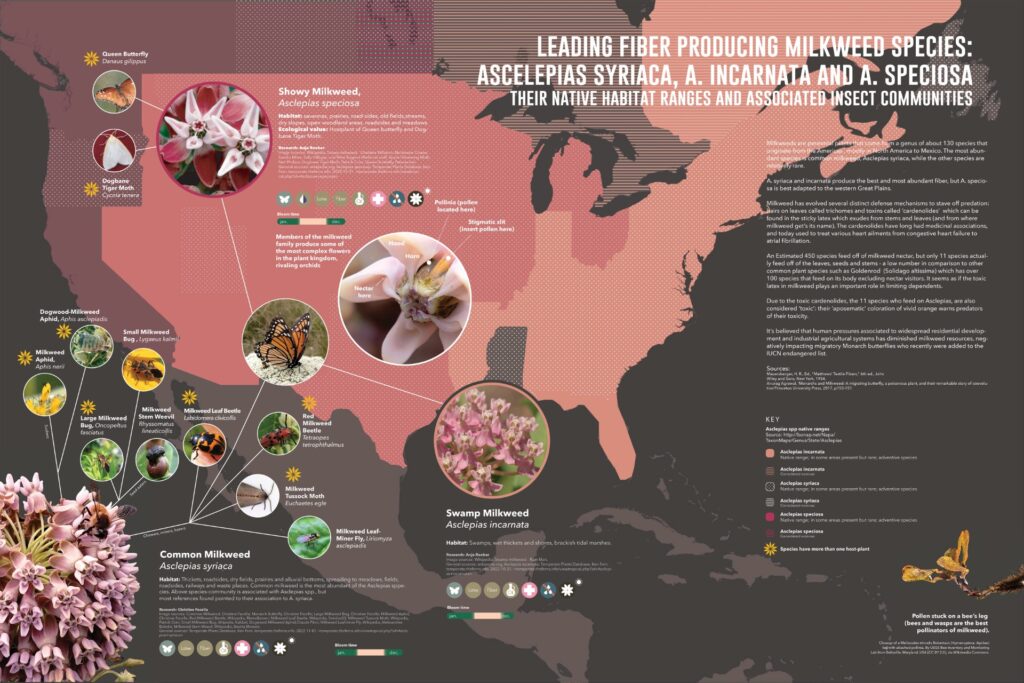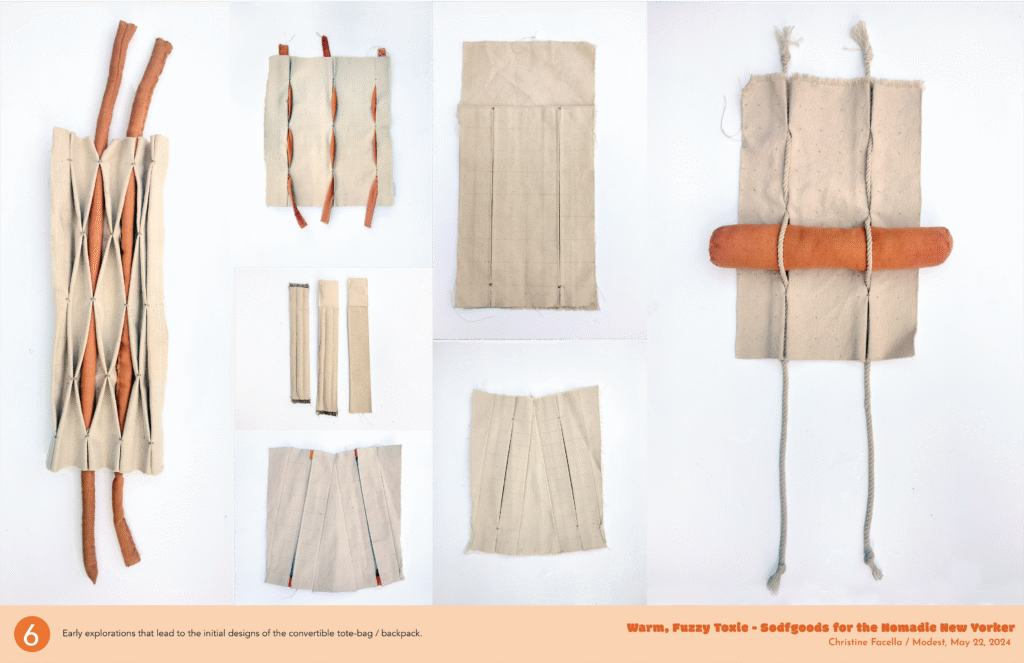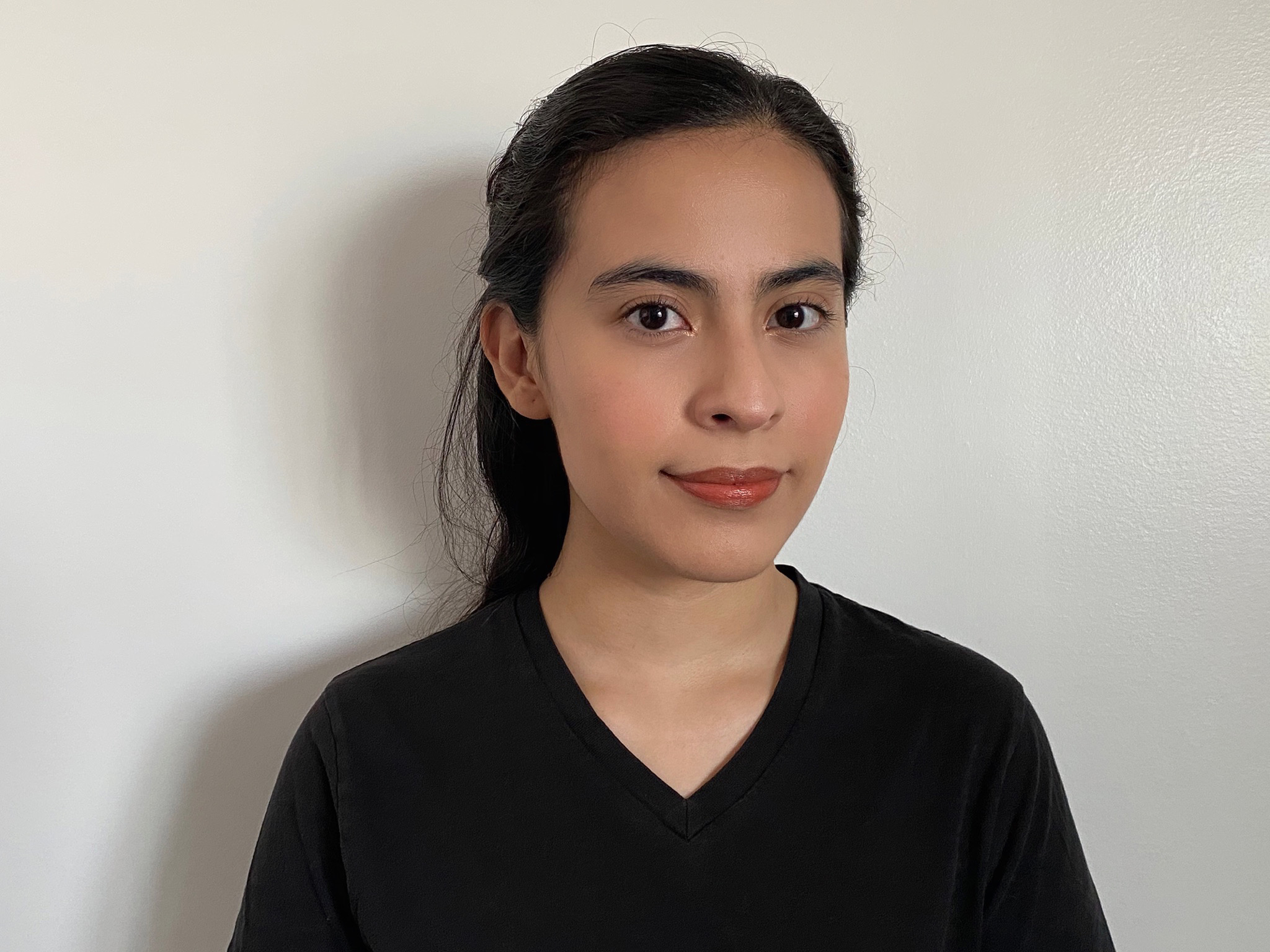
Christine Facella. Photo Source: CCNY.
Milkweed, a native plant to the Americas, once dismissed as merely a weed, now emerges as a force in sustainable design. Christine Facella, a 2017 alumna of CCNY’s Master’s of Landscape Architecture and director of the Industrial Design department at Parsons School of Design, uses milkweed and textile waste to rethink how and why we make the things we use. Her latest awarded project explores how soft goods can support both ecological systems and urban living, right down to a New Yorker’s daily commute.
Facella’s project, titled “Warm, Fuzzy, Toxic: Milkweed Softgoods for the Nomadic New Yorker,” centers on creating a prototype bedroll and everyday bag using North American milkweed fiber and repurposed textiles from New York City’s Garment District.
“This project is showing how a product in its production can support ecological welfare,” Facella said in an interview with the RICC. “Through this milkweed fiber system, it can support livelihoods and use waste as a resource.”
Facella’s interest in sustainable materials grew from her early work with artisans in Latin America and Asia, where she was drawn to plant-based materials and the environmental systems surrounding them. She pursued a Master of Landscape Architecture at CCNY to explore plant systems through a human-centered urban lens.
She credits her time at the Spitzer School and mentors like Denise Hoffman Brandt, Catherine Seavitt Nordenson, and Andrea Parker for shaping her values around systems thinking and local ecological practices.
“They were all great,” she said. “It wasn’t the traditional path, but it gave me the tools I needed to pursue this inquiry of plant-based resources and material systems.”

Visualization of Leading Fiber Producing Milkweed Species. Photo Source: Courtesy of Facella.
The core element of “Warm, Fuzzy, Toxic” is milkweed fiber, a native plant alternative to cotton that requires significantly less water and chemical input, such as synthetic pesticides, herbicides, and fertilizers.
“Milkweed is a great alternative, and it supports the migratory monarch butterfly, which keeps going on and off the threatened and endangered list,” Facella said.
Facella partnered with Canadian farmers in the Coop Monark, who cultivate milkweed but face challenges bringing the fiber to market due to low awareness and a lack of institutional support. Her project seeks to bridge that gap by developing proof-of-concept products and educational kits that can be shared with design schools.
The project also includes repurposed textiles through FabScrap, a nonprofit organization that collects and redistributes discarded fabric from New York’s fashion industry.
Two products are currently being developed: a convertible cotton canvas bag and a modular bedroll or pillow system, both tailored for daily urban living.
Her team is also testing the viability of cultivating milkweed on former industrial sites, or Superfund areas, in New York.

Early explorations of design for the convertible tote-bag. Photo Source: Courtesy of Facella.
Facella has emphasized hands-on making and a return to the tactile side of design throughout the project.
“I decided not to use a computer at all, just sketchbooks and physical modeling,” she said. “It’s been so rewarding.”
In regards to the future, Facella hopes her project challenges mainstream design by centering ecological function, local material sourcing and adaptability for city life. She also plans to expand to a larger community-based project, especially in Central and South America, where she hopes to work with local organizations on forest-friendly material systems.

Sofia is a graduate student at CUNY Brooklyn College, where she’s pursuing her M.S. in Media Studies. In addition to writing for The RICC, she’s a writer for the features section of Brooklyn College’s student-run newspaper, The Vanguard. She is also a dedicated writer for the Brooklyn News Service.